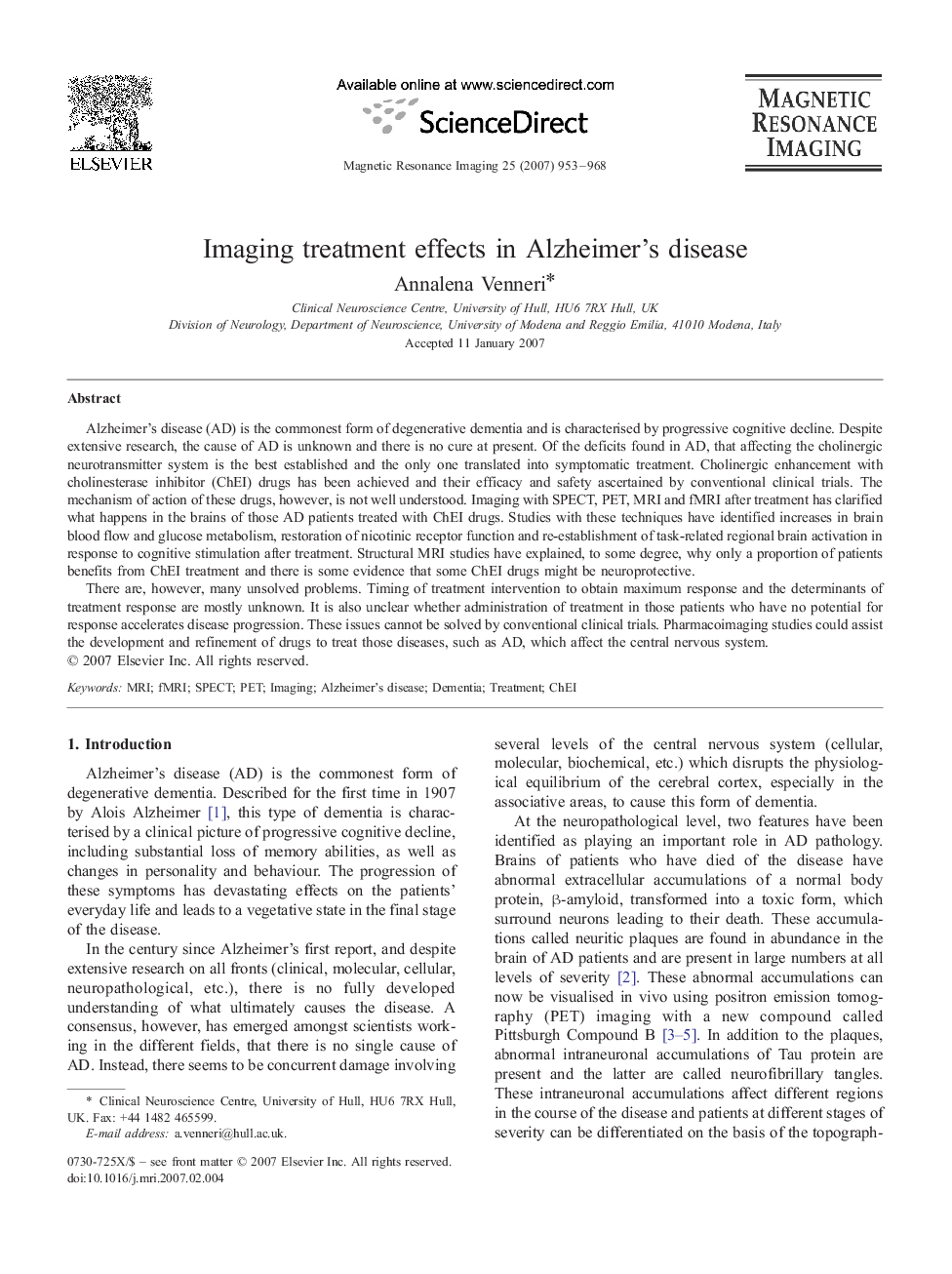| Article ID | Journal | Published Year | Pages | File Type |
|---|---|---|---|---|
| 1807537 | Magnetic Resonance Imaging | 2007 | 16 Pages |
Alzheimer's disease (AD) is the commonest form of degenerative dementia and is characterised by progressive cognitive decline. Despite extensive research, the cause of AD is unknown and there is no cure at present. Of the deficits found in AD, that affecting the cholinergic neurotransmitter system is the best established and the only one translated into symptomatic treatment. Cholinergic enhancement with cholinesterase inhibitor (ChEI) drugs has been achieved and their efficacy and safety ascertained by conventional clinical trials. The mechanism of action of these drugs, however, is not well understood. Imaging with SPECT, PET, MRI and fMRI after treatment has clarified what happens in the brains of those AD patients treated with ChEI drugs. Studies with these techniques have identified increases in brain blood flow and glucose metabolism, restoration of nicotinic receptor function and re-establishment of task-related regional brain activation in response to cognitive stimulation after treatment. Structural MRI studies have explained, to some degree, why only a proportion of patients benefits from ChEI treatment and there is some evidence that some ChEI drugs might be neuroprotective.There are, however, many unsolved problems. Timing of treatment intervention to obtain maximum response and the determinants of treatment response are mostly unknown. It is also unclear whether administration of treatment in those patients who have no potential for response accelerates disease progression. These issues cannot be solved by conventional clinical trials. Pharmacoimaging studies could assist the development and refinement of drugs to treat those diseases, such as AD, which affect the central nervous system.
